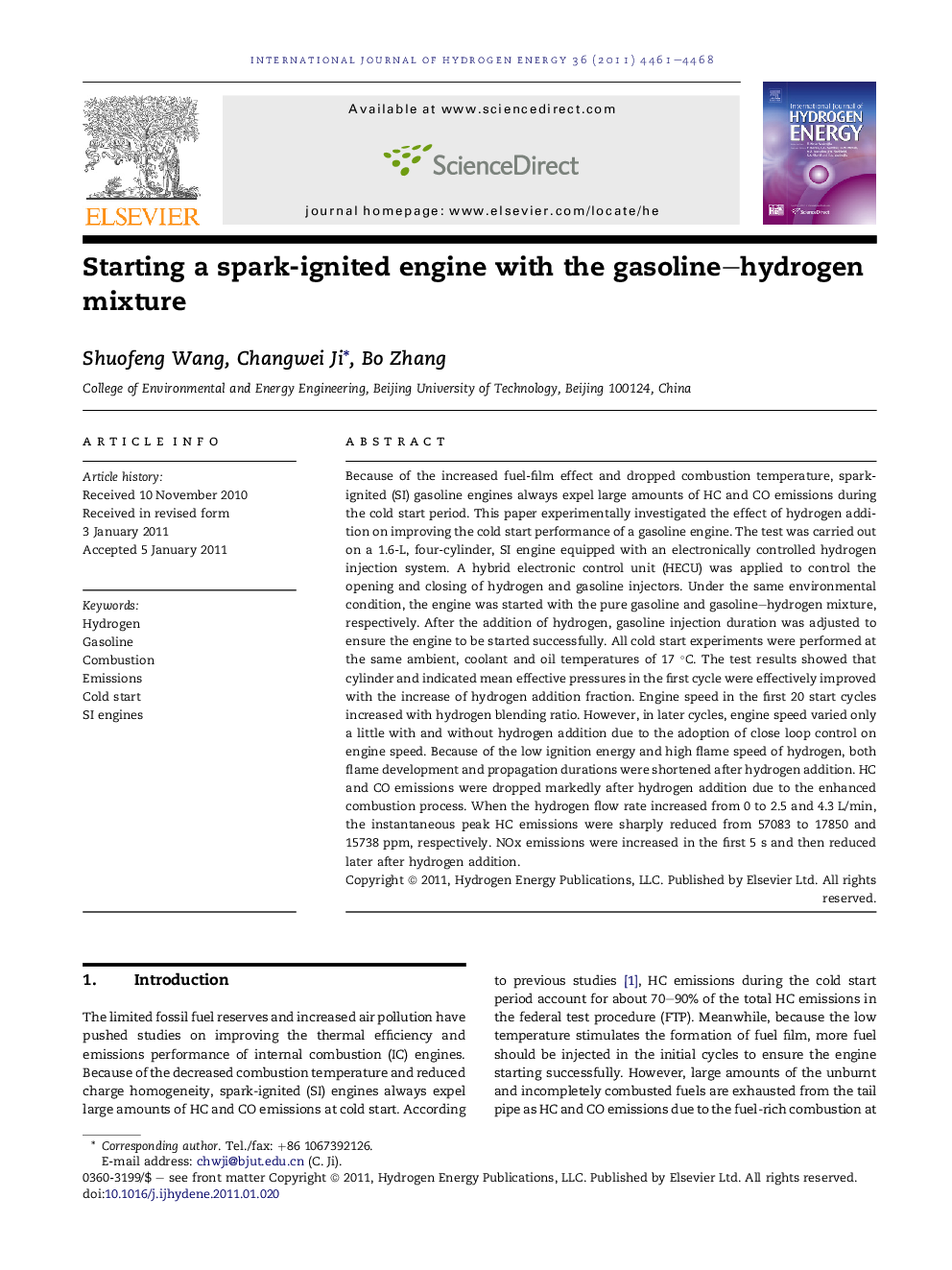| کد مقاله | کد نشریه | سال انتشار | مقاله انگلیسی | نسخه تمام متن |
|---|---|---|---|---|
| 1276234 | 1497586 | 2011 | 8 صفحه PDF | دانلود رایگان |

Because of the increased fuel-film effect and dropped combustion temperature, spark-ignited (SI) gasoline engines always expel large amounts of HC and CO emissions during the cold start period. This paper experimentally investigated the effect of hydrogen addition on improving the cold start performance of a gasoline engine. The test was carried out on a 1.6-L, four-cylinder, SI engine equipped with an electronically controlled hydrogen injection system. A hybrid electronic control unit (HECU) was applied to control the opening and closing of hydrogen and gasoline injectors. Under the same environmental condition, the engine was started with the pure gasoline and gasoline–hydrogen mixture, respectively. After the addition of hydrogen, gasoline injection duration was adjusted to ensure the engine to be started successfully. All cold start experiments were performed at the same ambient, coolant and oil temperatures of 17 °C. The test results showed that cylinder and indicated mean effective pressures in the first cycle were effectively improved with the increase of hydrogen addition fraction. Engine speed in the first 20 start cycles increased with hydrogen blending ratio. However, in later cycles, engine speed varied only a little with and without hydrogen addition due to the adoption of close loop control on engine speed. Because of the low ignition energy and high flame speed of hydrogen, both flame development and propagation durations were shortened after hydrogen addition. HC and CO emissions were dropped markedly after hydrogen addition due to the enhanced combustion process. When the hydrogen flow rate increased from 0 to 2.5 and 4.3 L/min, the instantaneous peak HC emissions were sharply reduced from 57083 to 17850 and 15738 ppm, respectively. NOx emissions were increased in the first 5 s and then reduced later after hydrogen addition.
Journal: International Journal of Hydrogen Energy - Volume 36, Issue 7, April 2011, Pages 4461–4468